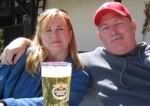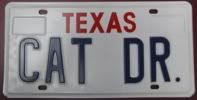 by duke » Thu May 01, 2008 8:22 pm
by duke » Thu May 01, 2008 8:22 pm
PHILADELPHIA (Reuters) - As U.S. gasoline prices hit records on almost a daily basis, an increasing number of motorists are following a radical driving technique designed to eke out every last mile from a tank of fuel.
Known as 'hypermiling,' the method can double gas mileage, even in gas-guzzling vehicles that would normally get less than 20 mpg.
Promoted on a growing number of Web sites, hypermiling includes pumping up tires to the maximum rating on their sidewalls, which may be higher than levels recommended in car manuals; using engine oil of a low viscosity, and the controversial practice of drafting behind other vehicles on the highway to reduce aerodynamic drag -- a practice begun a few years ago by truck drivers.
The price of gasoline -- which hit a record of nearly $3.61 per gallon on Tuesday, according to travel club AAA -- has rapidly emerged as the public's biggest economic concern.
Gas prices are a "serious problem," ahead of jobs, and healthcare, according to a poll released on Tuesday by the Kaiser Family Foundation.
The "advanced" techniques of hypermiling are in addition to well-known approaches including keeping speed down, accelerating gently, avoiding excessive idling and removing cargo racks to also cut down on aerodynamic drag.
Adherence to hypermiling and other disciplines are designed to boost mileage well in excess of the U.S. Environmental Protection Administration's official ratings, which apply to each car model.
COSTS SAVED
Wayne Gerdes, a former nuclear plant operator from Wadsworth, Illinois, and the originator of hypermiling, said he gets 40-70 mpg out of his Ford Ranger pickup truck, about doubling its official fuel consumption of 25 mpg.
Gerdes, 47, estimates that hypermiling has saved him $15,000 in fuel since he began the technique after the attacks of September 11, events that convinced him that U.S. national security was being undermined by its dependence on oil from the Middle East, and motivated him to reduce his own fuel consumption.
"If every vehicle in the U.S. got 45 miles per gallon, we would not import any oil," he said.
Deron Lovaas, vehicles campaign director at environmental group the Natural Resources Defense Council, said most hypermiling techniques are "sensible recommendations" that could drive down demand and even prices if widely adopted.
"We should be looking under every rock for potential energy savings," he said.
He said he could not recommend drafting behind fast-moving trucks because it could potentially lead to highway accidents.
Hypermiling can even make fuel-sipping gas-electric hybrid cars more efficient. Chuck Thomas, 50, a computer programmer from Lewisville, Texas, said he has been getting 71 mpg from his Honda Insight, a hybrid whose EPA rating is 58 mpg, in the two years since he has been hypermiling.
Among Thomas' techniques is "pulse and glide" in which he accelerates and then coasts with the engine off until around 15 mph when he kicks the engine back on and accelerates again. "It's the automotive equivalent of skateboarding," he said.
(Editing by Timothy Gardner and Philip Barbara)
There comes a time in every rightly constructed boy's life that he has a raging desire to go somewhere and dig for hidden treasure. - Mark Twain

.






 Good one Steve.
Good one Steve.



 It's environmentally stinky BUT friendly.
It's environmentally stinky BUT friendly. 

 Mark (& Cindi)
Mark (& Cindi) 


